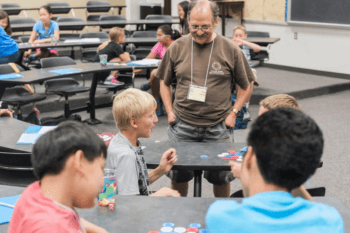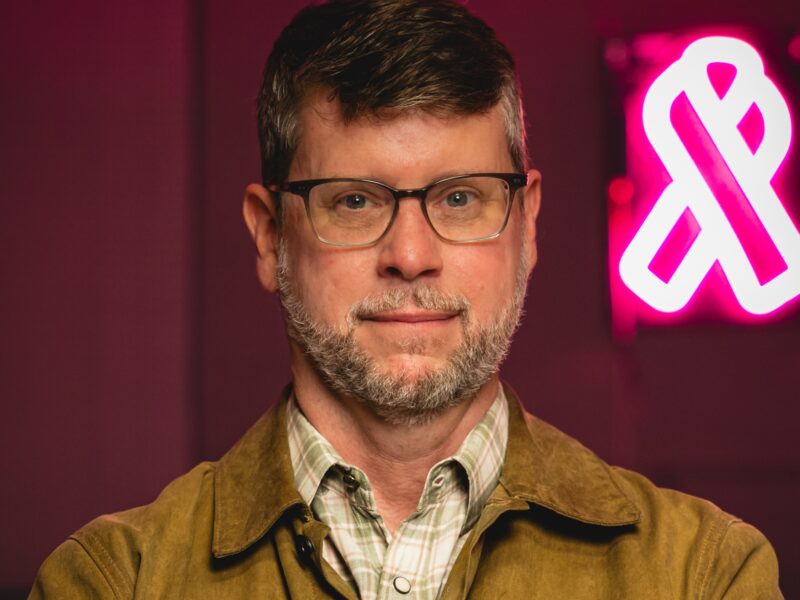Youth Enrichment Program Helps Students Realize Mathematics Potential

Summer may constitute a break from school, but for dedicated young mathematics enthusiasts like Karla Aranda, 11, it doesn’t involve a break from learning.
“I love learning math, but there are many things about math I haven’t learned yet,” she said. “That’s why I wanted to come to SEE-Math.”
Aranda was one of 43 students who took part last month in Summer Educational Enrichment in Math (SEE-Math) at Texas A&M University, a two-week program annually hosted by the Department of Mathematics that attracts middle school students from across the Brazos Valley. Participants spend four hours each day rotating between different stations featuring various hands-on lessons — studying cryptology, solving logic puzzles and playing with mirrors — as a way of learning important mathematical theorems.
The camp, now in its 15th year, is organized by Texas A&M associate professor Philip Yasskin and instructional assistant professor David Manuel and tailored for students who are gifted in mathematics, enabling them to build upon concepts learned in school and their love of mathematics and science. The program begins accepting applications in the spring, and between 40 and 60 students are selected each year based on their ability and interest in mathematics as reported by their teachers.
“We present a lot of, in many cases, almost college-level material in a concrete, hands-on fashion where the kids can discover some of the principles themselves,” Manuel said. “It’s not really your traditional school setting, but at the same time, a lot of knowledge and enrichment goes on.”
Yasskin says what sets his program apart from typical public education curricula is the opportunity students have to understand the role math plays in the world around them.
“Throughout all K-12 education, it’s all about learning how to compute the next thing instead of how to use the math to do interesting things outside of the classroom environment,” Yasskin said. “SEE-Math lets kids ‘see math’ for its aesthetic beauty and not just as a computational tool.”
A consistent favorite SEE-Math activity among students through the years has been computer animation. Using the computer algebra software Maple 2016, participants learn how to make different shapes using code, which they then can use to create a short animated movie. On the final day of SEE-Math, parents and siblings are invited to campus to watch the movies, with the top animators earning prizes.
Coding has always intrigued Matthew Sprintson, 10, who says attending SEE-Math seemed like a great opportunity to dabble in one of his interests.
“Learning how to code just sounded interesting, and I really wanted to know,” Sprintson said. “It starts out hard, but once you get to understand it, it starts getting fun.”
Approximately 650 students have gone through SEE-Math since Yasskin launched the program in 2002. All sessions are conducted by Texas A&M mathematics faculty and graduate students who are assisted by counselors — primarily undergraduate students and high school students who previously participated in the program as campers. One such student, Hannah Hunt, was a camp participant in 2010 and recalled how she enjoyed meeting kids like herself who didn’t find it “strange” to love math. Hunt, now an incoming freshman at Austin College, says the best part of being a counselor is watching kids learn something new.
“That light bulb moment when they get it is really cool, because you’re seeing them understand something they wouldn’t normally come into contact with,” she said. “I was really glad to help with SEE-Math this summer.”
As a math professor for more than 30 years, Yasskin admittedly has a soft spot for helping children learn. In addition to directing SEE-Math, he also provides oversight for TAMU Math Circle, which offers math enrichment activities for gifted students in grades 5-12 almost every Saturday afternoon during the fall and spring semesters.
Ask Yasskin why he chooses to take on youth outreach programs in addition to his responsibilities as a professor, and his answer comes punctuated a wink and a smile: “It keeps me young.”
“I just enjoy outreach,” Yasskin said. “The kids are really fun to work with — seeing these really bright kids just sucking up the material and finding it fun.”
To learn more about SEE-Math, visit http://see-math.tamu.edu.
For additional information on TAMU Math Circle, including upcoming fall activities, go to http://mathcircle.tamu.edu/.
Media contact: tamunews@tamu.edu.





